





Coma
Disputes on the nature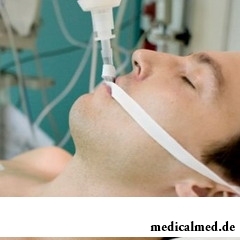 of consciousness are conducted with ancient times. This concept is related to different areas of human knowledge: to science, philosophy, religion. From the point of view of medicine, consciousness is a product of higher nervous activity of the person. Consciousness is connected with functioning of a cerebral cortex and some subcrustal structures. Various conditions of the changed consciousness are studied by psychiatry and neurology. The coma is the condition of the broken consciousness caused by crushing bilateral defeat of cerebral hemispheres or pathology of the ascending reticular formation of the varoliyevy bridge activating a cerebral cortex through a thalamus.
of consciousness are conducted with ancient times. This concept is related to different areas of human knowledge: to science, philosophy, religion. From the point of view of medicine, consciousness is a product of higher nervous activity of the person. Consciousness is connected with functioning of a cerebral cortex and some subcrustal structures. Various conditions of the changed consciousness are studied by psychiatry and neurology. The coma is the condition of the broken consciousness caused by crushing bilateral defeat of cerebral hemispheres or pathology of the ascending reticular formation of the varoliyevy bridge activating a cerebral cortex through a thalamus.
Coma combines unconsciousness, lack of active movements, reactions to external irritants, loss of reflexes and sensitivity, disturbance of the vital functions of an organism (cordial and respiratory activity). The coma represents threat for life and health of the patient. This state is not an independent disease. Such severe defeat can have the different reasons.
To a coma craniocereberal or other injury, disturbance of cerebral circulation, lack of oxygen can bring into blood (a suffocation, drowning), poisonings with drugs, alcohol, hypovitaminosis, encephalopathy, volume formation of a cerebellum, hypovitaminosis, brain trunk ischemia, psychogenic factors, disbolism (a renal failure, diabetes).
Degree of a coma can be different. Mark out precomas – a sopor and a stupor. The expressed drowsiness - a sopor happens an initial stage usually. The patient reacts to a voice, but it seems sleeping all the time. Answers questions in monosyllables, can execute the elementary orders. Further the stupor when the patient reacts to painful irritants follows, but does not react to a voice. At an aggravation of symptoms there comes the coma. To whom characterizes lack of reaction to painful irritants and the turned speech. The patient does not talk, does not execute even the elementary orders, does not open an eye in response to a painful irritant. On a scale of Glasgow it is a condition it is estimated in 8 points and less.
On weight to whom divide into three degrees: easy, average degree and heavy. At coma of easy degree in response to strong pain stimulation there are motor reactions, tendon and pupillary jerks. Disturbances of cordial activity and breath are expressed poorly. Average degree of a coma is shown by aggravation of frustration: motor reaction on strong pain stimulation disappears, tendon and pupillary jerks are almost not caused. Swallowing and function of pelvic bodies are broken. Are more expressed respiratory and cardiac pathology. At heavy degree of a coma a condition of the patient extremely heavy: full atony of muscles, temperature drop of a body, lack of all reflexes. Disturbances from breath are sharply expressed and cordial activity. At bilateral defeats of prefrontal (frontal) departments of a brain (for example, at ischemia, hemorrhage, a tumor) at the patient visibility of wakefulness remains, but it does not react on surrounding and even painful irritants. The neurologist has to exclude some states, similar to a coma: hysterical reactions, a normal dream, overdose of sedative drugs, convulsiveless epilepsy, a tumor of a frontal lobe, a syndrome of "the locked person".
Diagnosis of a coma
Symptoms of a coma include lack of reaction to external irritants. Felling into a heavy coma, the patient consistently loses ability to react at first to orders, questions, then and pain. Sometimes it is possible to determine its reason by coma symptoms. At a vklineniya of a temporal bone and a prelum of a brainstem the mydriatic pupil is observed, the photoharmose is absent. This hemilesion also corresponds to the party of an injury. At air hunger pupils will be expanded from two parties, the photoharmose will not be. If the coma turned out to be consequence 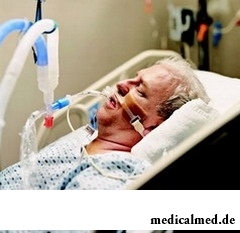 of overdose by opiates (morphine, heroin) or a stroke, then pupils will be strongly narrowed. Breath disturbances (increase or an uryazheniye) happens at an injury or a stroke of a brainstem.
of overdose by opiates (morphine, heroin) or a stroke, then pupils will be strongly narrowed. Breath disturbances (increase or an uryazheniye) happens at an injury or a stroke of a brainstem.
Diagnosis is based on characteristic symptoms of a coma, laboratory and tool researches. The program of initial inspection of the patient in coma includes the analysis of urine, blood on toxic substances, biochemical analysis of blood with determination of level of glucose, creatinine, bilirubin, liver enzymes, a research of function of a thyroid gland (thyritropic hormone), the electrocardiogram, a computer tomography of a brain. Sometimes investigate cerebrospinal fluid. For an exception of an injury of cervical department of a backbone carry out a backbone X-ray analysis. For an exception of epilepsy the electroencephalography is recommended.
Treatment of a coma
Help to the patient is given immediately in hospital conditions. Treatment of a coma depends on its reason. As urgent measures apply the means supporting the blood circulation and breathes stopping vomiting. If exchange disturbances are the cornerstone of a coma, their correction is required. So at a diabetic coma with the high level of sugar of blood it is necessary to enter intravenously insulin. If sugar level low, then is entered glucose solution. In case of an uremic coma (renal failure) to the patient carry out a hemodialysis (blood clarification by the artificial kidney). Treatment of an injury most often means an operative measure, a stop of bleeding and correction of volume of the circulating blood. At hematomas in covers of a brain operational treatment in the conditions of neurosurgical department is required. If the patient had spasms, for treatment of a coma use anticonvulsant drug Phenytoinum intravenously. If coma is caused by intoxication, the artificial diuresis, dezintoksitsiruyushchy drugs, administration of liquid intravenously is recommended. At suspicion on overdose of narcotic substances Narcanum or Naloxonum is used. At an alcoholic coma or a hypovitaminosis intravenously enter thiamin. At disturbances of breath the intubation of a trachea and artificial ventilation of the lungs can be required. The resuscitator selects suitable mix of gases, often preference is given to the increased content of oxygen (for example, at treatment of the coma caused by alcohol).
Forecast of a coma
The forecast of a coma is defined by the reason and a stage of a state, the forecast at average and heavy degree of a coma is most serious. Most often symptoms of a coma it is heavier if defeat of trunk structures, but not a cerebral cortex is the cornerstone. Disbolism are adjusted easier, than injuries and tumors therefore in this case the forecast of a coma is slightly better. The forecast of a coma at an apoplexy is most serious (hemorrhage in structures of a brain), uraemic (renal), traumatic and eklampsichesky (a consequence of toxicosis of pregnancy on late term) koma.
Many drugs initially moved ahead in the market as drugs. Heroin, for example, was initially brought to the market as children's cough medicine. And cocaine was recommended by doctors as anesthesia and as the means increasing endurance.

Helminthosis is one of the most widespread diseases. Statistically, with any species of helminths it is infected porridges...
Section: Articles about health
So, you resolved to lose weight. And now you try to understand what to begin with: from exercise stresses or a diet? And how to make that process of weight loss did not give you an inconvenience, and, on the contrary, brought joy?...
Section: Slideshow
The pine is one of the most widespread plants of our woods. Its needles and pitch not without reason called by "gallipot" were since ancient times used for strengthening of protective forces of an organism, treatment of avitaminosis, anemia and many other diseases. In recent years wide popularity was gained by the national medicines prepared from pinecones. "Fruits" of a coniferous tree contain a huge amount of vitamins, biologically active agents, antioxidants, phytoncides and other useful to...
Section: Articles about health
Sugar - the digestible refined product which is not of special value for an organism of the modern person. Use...
Section: Articles about health
High temperature - a frequent symptom of such widespread diseases as a SARS, quinsy, pneumonia, etc. To reduce heat, having facilitated a condition of the patient, doctors recommend to accept antipyretics, however their use is not always possible. Too h...
Section: Articles about health
Stability of a hormonal background is one of the most important conditions of preservation of health of the woman. At the same time endocrine system – the thin device extremely sensitive to any external influences. Changes of a way of life (for example, a diet), emotional stresses, infectious diseases, reception of some drugs can become the reason of hormonal failure. Besides, work of hemadens has the natural specifics in certain moments of life: on various St...
Section: Articles about health
Aging — natural and inevitable process. Over time our skin loses elasticity, on it saggings, a face form теря are formed...
Section: Articles about health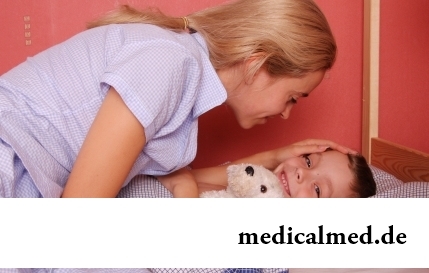
Neurosis is called pathology of a nervous system at which deviations in functioning of the highest nervous processes are observed. Most often - owing to yet not strengthened mentality - children are subject to neurosises. Premises to emergence of such disturbances can become нез...
Section: Articles about health
To look healthy and means well-groomed not only to be pleasant to people around, but also to feel strong, sure and taken place. Specialists in the field of cosmetology quite often note that not all women are able to look after face skin. Many women incorrectly apply cosmetics, ineptly use various procedures, without having exact information on their real influence and dividing numerous delusions about it. All this not the best...
Section: Articles about health
Doctors claim that the people not so familiar with a dorsodynia occur among adult Russians very seldom. At the same time подавляющ...
Section: Articles about health
According to doctors, more than a half of men of 25-50 years suffer from frustration of the urinogenital sphere, but the minority sees a doctor from them. And in vain - even the insignificant discomfort in the field of generative organs can serve as a symptom of an illness fraught heavy посл...
Section: Articles about health
Each person knows that fervescence is an illness sign. However too low temperature (hypothermia), especially also can demonstrate existence of diseases when it is observed long enough. Such state is dangerous that it, unlike fever, does not give a serious inconvenience: patients usually complain only of weakness, drowsiness, apathy. Sometimes the fever and a cryesthesia in extremities joins. Many people at similar symptoms...
Section: Articles about health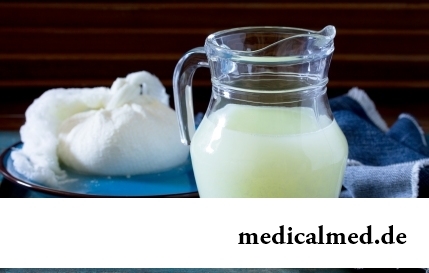
Milk and products of its processing by right occupy one of the main places in a diet of the modern person. They contain necessary...
Section: Articles about health
Food with the increased content of sugar is attractive to most of people - it is scientifically confirmed fact. Business here not in intemperance or dissoluteness: the sweet food is associated since childhood with feeling of rest and safety which is felt by the kid, to...
Section: Articles about health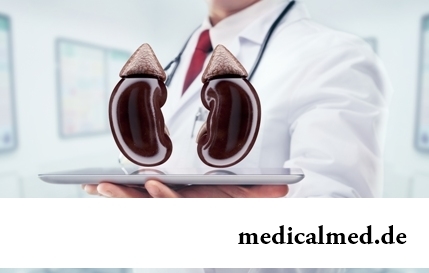
Kidneys perform the most important function of clarification of blood from those products of metabolic processes which cannot be used by an organism for obtaining energy and construction of new cells. With the urine produced by kidneys from a body of the person the bulk of the toxins getting to it with food and water is removed. Normal functioning of kidneys provides removal from an organism of excess liquid and maintenance of optimum ionic balance. At emergence of failures in work of secretory system...
Section: Articles about health
The endocrine system carries out in a human body extremely important role, practically all processes of life activity регулируютс...
Section: Articles about health
Each failure in work of bodies and systems of a human body is, as a rule, shown by the whole complex of symptoms. In particular, malfunctions with health often cause emergence of cosmetic defects in the form of rashes on a face. Experienced doctors know that локализац...
Section: Articles about health
The naturopathy sometimes moves as the new direction of medicine, something like fashionable hobby, and there is nothing farther from the truth. This most ancient direction, the word "naturopathy" is translated as "treatment by the nature", and, no doubt, treatment by natural gifts was the first and only, available to the person in ancient times. Despite modern achievements of medicine, the naturopathy remains urgent and today, anyway the person - a part of the nature, and природн...
Section: Articles about health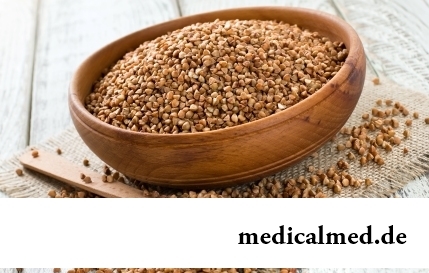
History of cultivation of a buckwheat contains more than five thousand years. Grain which is received from this plant is used for пригото...
Section: Articles about health
For the city dweller the fitness is the most convenient sport. It is enough to acquire the subscription to the gym to get access to various apparatuses and an opportunity to train under the leadership of the experienced consultant. Many consider fitness on...
Section: Articles about health
All like to sing. Small children with pleasure are engaged in a vocal, not especially thinking of hit in a melody. Adults most often hesitate, being afraid to show lack of talents in this area, and it is vain: singing is very useful for health....
Section: Articles about health
The main role in development of a peptic ulcer of a stomach and duodenum the bacterium Helikobakter plays pilor. Activity and Wuxi...
Section: Articles about health
Iodine - one of thirty most important microelements in our organism. The main role of iodine consists in synthesis of thyroid hormones of a thyroid gland - the substances which are responsible for the majority of exchange processes of an organism. It is known that thyroid hormones consist...
Section: Articles about health
According to World Health Organization, every third inhabitant of Earth has excess weight, and every tenth has obesity. The reason of this phenomenon, according to specialists, roots in one not very comforting fact: most of people consume much more calories, than it is necessary. How it turns out what we overeat? Why it is so difficult to refuse an excess portion tasty or additives? Let's try to find out what factors prevent us to eat food with reasonable moderation....
Section: Articles about health
What is in our understanding weeds? It plants which are considered to be suitable only for compost pits and feeding жи...
Section: Articles about health
Coffee - the tonic loved by many for the invigorating aroma and deep taste. Having the stimulating effect, coffee increases working capacity, promotes concentration of attention, fights against drowsiness and improves mood. Statistically, about 30% of inhabitants...
Section: Articles about health
The number of long-livers is very small. One person from 5 thousand lives up to age of 90 years, and the centenary boundary steps over only one of 20 thousand. However, doctors claim that each of us is quite able to affect own destiny. At the same time it is not so much about living as long as possible, how many about an opportunity to keep physical and intellectual activity and to avoid decrepitude. We will also talk about the ways helping to achieve this result today....
Section: Articles about health
